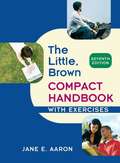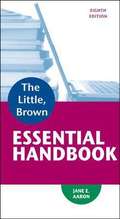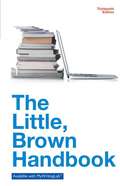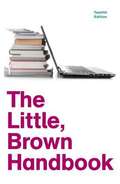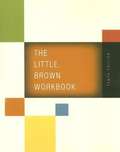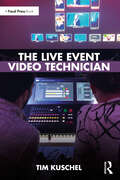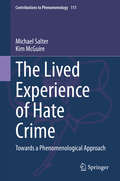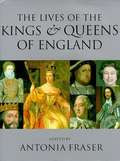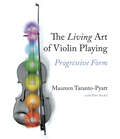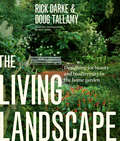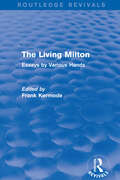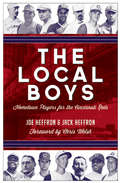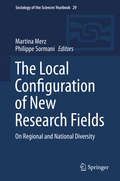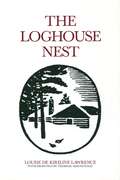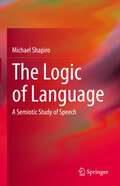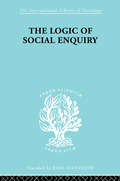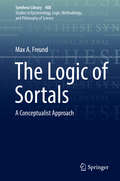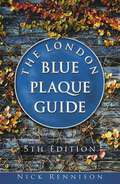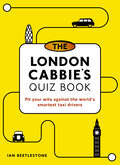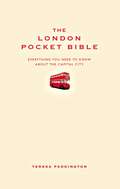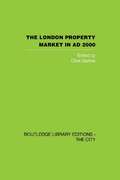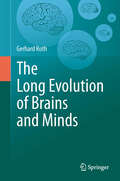- Table View
- List View
The Little, Brown Compact Handbook with Exercises (7th Edition)
by Jane E. AaronThe Little, Brown Compact Handbook with Exercises packages the authority and currency of its best-selling parent, The Little, Brown Handbook, in a briefer book with spiral binding, tabbed dividers, and more than 150 exercises. Concise and accessible, The Little, Brown Compact Handbook helps writing students find what they need and then use what they find. It provides clear explanations of the writing process, grammar, usage, critical thinking, and argument. Its thorough, up-to-date coverage of research writing stresses the library as Web gateway, evaluation and synthesis of print and online sources, and intellectual honesty. It provides the latest documentation guidelines in MLA, APA, Chicago, and CSE styles.
The Little, Brown Essential Handbook (Eighth Edition)
by Jane E. AaronFor first year composition and undergraduate courses across the curriculum. The Little, Brown Essential Handbook , Eighth Edition, is a brief, accessible, and inexpensive pocket-sized handbook that answers questions about writing in the disciplines, the writing process, grammar and usage, research writing, and documentation. Teaching and Learning Experience This text will provide a better teaching and learning experience--for you and your students. It provides: · Minimal terminology, clear explanations and examples, and pointers for ESL writers: Help students at all levels of learning. · Extensive sections on academic writing, research writing, source documentation, and document design: Support writers in all disciplines. · Convenient pocket size, four-color design, spiral binding, and numerous reference aids: Make the book convenient to carry and easy to use.
The Little, Brown Handbook (High School Version)
by Jane E. Aaron H. Ramsey FowlerThe handbook can help students build the writing skills they need to prepare for college-level coursework in many disciplines like developing paragraphs, punctuate quotations, write a college-application essay etc.
The Little, Brown Handbook (Thirteenth Edition)
by Jane E. Aaron H. Ramsey Fowler<P>The gold standard of handbooks – unmatched in accuracy, currency, and reliability. <P>The Little, Brown Handbook is an essential reference tool and classroom resource designed to help students find the answers they need quickly and easily.<P> While keeping pace with rapid changes in writing and its teaching, it offers the most comprehensive research and documentation available–with grammar coverage that is second to none.<P> With detailed discussions of critical reading, media literacy, academic writing, and argument, as well as writing as a process, writing in the disciplines, and writing beyond the classroom, this handbook addresses writers of varying experience and in varying fields.
The Little, Brown Handbook 12th Edition
by Jane E. Aaron H. Ramsey FowlerThe Little, Brown Handbook provides reliable and thorough coverage of handbook basics--the writing process, grammar and usage, research and documentation--while also giving detailed discussions of critical reading, academic writing, reading and writing arguments, writing in the disciplines, and public writing. Widely used by both experienced and inexperienced writers, The Little, Brown Handbook works as both a comprehensive classroom text and an accessible reference guide.
The Little, Brown Workbook (10th Edition)
by Donna GorrellThe tenth edition of The Little, Brown Workbook is designed to closely parallel its companion, The Little, Brown Handbook, Tenth Edition, in organization, approach and guidelines for writing. Instructors can use the workbook as an instructional supplement to the handbook or as an independent text. The format of the workbook allows instructors to use each part according to their own teaching styles and their students' needs, choosing to use parts sequentially or as reference guides.
The Live Event Video Technician
by Tim KuschelThe Live Event Video Technician covers terms, format types, concepts, and technologies used in video production for corporate meetings, concerts, special events, and theatrical productions. The book begins by providing a history of the industry and an overview of important roles and functions therein. It then discusses various display technologies such as LED walls and video projection, as well as video systems for converting and switching of various types of sources. Presenting the cornerstone formats, connectors, and methodologies of visual technology, this book offers a strong foundation to help readers navigate this ever-changing field. Written in an accessible tone, the book clarifies jargon and is an overarching source of knowledge for the role of the video technician, for which there has previously been little formal training. The Live Event Video Technician provides a wealth of practical information for students of media and communications courses, readers with a novice or entry-level understanding of video and AV production, and anyone with an interest in working as technical personnel in live event production.
The Lived Experience of Hate Crime: Towards a Phenomenological Approach (Contributions to Phenomenology #111)
by Michael Salter Kim McGuireThis book approaches the topic of the subjective, lived experience of hate crime from the perspective of Husserlian phenomenology. It provides an experientially well-grounded account of how and what is experienced as a hate crime, and what this reveals about ourselves as the continually reconstituted “subject” of such experiences. The book shows how qualitative social science methods can be better grounded in philosophically informed theory and methodological practices to add greater depth and explanatory power to experiential approaches to social sciences topics. The Authors also highlight several gaps and contradictions within Husserlian analyses of prejudice, which are exposed by attempts to concretely apply this approach to the field of hate crimes.Coverage includes the difficulties in providing an empathetic understanding of expressions of harmful forms of prejudice underlying hate crimes, including hate speech, arising from our own and others’ ‘life worlds’. The Authors describe a ‘Husserlian-based’ view of hate crime as well as a novel interpretation of the value of the comprehensive methodological stages pioneered by Husserl. The intended readership includes those concerned with discrimination and hate crime, as well as those involved in qualitative research into social topics in general. The broader content level makes this work suitable for undergraduate and postgraduate students, even professionals within law enforcement.
The Lives of the Kings and Queens of England
by Antonia FraserUpdated with a new chapter on the Windsors, including the death of Diana, this reference offers a concise guide to the great dynasties of English royalty.
The Living Art of Violin Playing: Progressive Form
by Maureen Taranto-PyattBlending creative insights with wisdom of the masters, professional violinist Maureen Taranto-Pyatt shares practical guidance in her new methodology, Progressive Form.With The Living Art of Violin Playing, violinists will learn to appreciate the physics and geometry of movement to facilitate a nuanced flow of compression and release in the playing. A gradual building of technique begins from sitting or standing, moves through the torso into the left arm first, sets up an effective bow arm, and then combines the two in a holistic context. Imagery invigorates each of the technical moments, instilling new patterns that are now memorable and integrating each component into larger forms.Featuring nearly 400 photos and music examples to illustrate technical elements through balance and gesture, Progressive Form can be used as a step-by-step retooling of technique or as a reference for targeted issues. A comprehensive exploration of method in service of musical expression, The Living Art of Violin Playing offers the aspiring and serious violinist a path toward a more liberated musical world.
The Living Landscape: Designing for Beauty and Biodiversity in the Home Garden
by Douglas W. Tallamy Rick DarkeMany gardeners today want a home landscape that nourishes and fosters wildlife. But they also want beauty, a space for the kids to play, privacy, and maybe even a vegetable patch. Sure, it’s a tall order, but The Living Landscape shows how to do it. By combining the insights of two outstanding authors, it offers a model that anyone can follow. Inspired by its examples, you’ll learn the strategies for making and maintaining a diverse, layered landscape—one that offers beauty on many levels, provides outdoor rooms and turf areas for children and pets, incorporates fragrance and edible plants, and provides cover, shelter, and sustenance for wildlife. Richly illustrated with superb photographs and informed by both a keen eye for design and an understanding of how healthy ecologies work, The Living Landscape will enable you to create a garden that is full of life and that fulfills both human needs and the needs of wildlife communities.
The Living Milton: Essays by Various Hands (Routledge Revivals)
by Sir Frank KermodeVarious aspects of Milton are explored in this collection of essays by scholars whose reputations were, at the time of publication in 1960, perhaps largely based on their writings on more modern subjects. This had the advantage of demonstrating that Milton as a poet is "alive" and that other attempts to represent him as irrelevant to the interests of the modern reader had failed. The essays offer to admirers of Milton and of modern poetry cogent and mature arguments for restoring a great poet to his proper authority in our literary life.
The Local Boys
by Jack Heffron Joe Heffron Chris WelshThe Local Boys tells the stories of men who achieved the boyhood dream of playing for the hometown team. From Ethan Allen to Don Zimmer, they're all here, including Charlie "Bushel Basket" Gould, who played on the first team in 1869 to Junior Griffey, soon to be a first-ballot Hall of Famer. Alongside big-name stars like Dave Parker and Buddy Bell, fans will find those like Eddie Hunter, who played only one inning in 1933, never got to bat, and never fielded a ball. Every player receives a one- or two-page profile, many of which are based on original interviews with the players or surviving family members. Going beyond statistics, each profile brings the player to life through stories that have never before been told in print. An indispensible look at Cincinnati baseball history, The Local Boys makes an ideal gift for any Reds fan.
The Local Configuration of New Research Fields
by Martina Merz Philippe SormaniThis new Yearbook addresses the question of how policy, place, and organization are made to matter for a new research field to emerge. Bringing together leading historians, sociologists, and organizational researchers on science and technology, the volume answers this question by offering in-depth case studies and comparative perspectives on multiple research fields in their nascent stage, including molecular biology and materials science, nanotechnology, and synthetic biology. The Yearbook brings to bear the lessons of constructivist ethnography and the "practice turn" in Science and Technology Studies (STS) more broadly on the qualitative, comparative, and critical inquiry of new research fields. In doing so, it offers unprecedented insights into the complex interplay of national research policies, regional clusters, particular research institutions, and novel research practices in and for any emerging field of (techno-)science. It systematically investigates national and regional differences, including the variable mobilization of such differences, and probes them for organizational topicality and policy relevance.
The Loghouse Nest
by Louise De LawrenceA charming account of the author’s special relationship with the birds and wild creatures who shared her northern homesite at Pimisi Bay, near Mattawa, Ontario. The Loghouse Nest is another Natural Heritage classic by Canada’s internationally acclaimed nature writer, Louise de Kiriline Lawrence. Delightfully illustrated throughout by no less than Thoreau MacDonald, with endpaper drawings by the author.
The Logic of Language: A Semiotic Study of Speech
by Michael ShapiroThis book serves as a basis for the exploration of language in a more systematic way. By surveying the several major divisions of language (phonology, morphology, syntax, lexis, tropology) and explicating the way in which sound and meaning cohere in them, this text lays bare––for students, scholars and advanced readers alike––the lineaments of an understanding of what makes language the sign system par excellence, in the service of its most important function as the instrument of cognition and of communication. This book is intended as a companion volume to Shapiro’s The Speaking Self: Language Lore and English Usage. The two volumes taken in tandem will provide a solid grounding in the observational science of linguistics, linking theory with practice in a way that will expand one’s understanding of language as a global phenomenon.
The Logic of Social Enquiry (International Library of Sociology)
by Quentin GibsonThis comprehensive set introduces the fundamental principles of Sociology as propounded by such great figures as Gerth and Mills, Schlesinger, and Homans. Containing classic works of social theory and empirical research, volumes in this set bring together the British, European and American traditions. The whole body of sociological theory is presented in such a way that is valuable and accessible to both students and teachers of Sociology, Political Theory and Geography.
The Logic of Sortals: A Conceptualist Approach (Synthese Library #408)
by Max A. FreundSortal concepts are at the center of certain logical discussions and have played a significant role in solutions to particular problems in philosophy. Apart from logic and philosophy, the study of sortal concepts has found its place in specific fields of psychology, such as the theory of infant cognitive development and the theory of human perception. In this monograph, different formal logics for sortal concepts and sortal-related logical notions (such as sortal identity and first-order sortal quantification) are characterized. Most of these logics are intensional in nature and possess, in addition, a bidimensional character. That is, they simultaneously represent two different logical dimensions. In most cases, the dimensions are those of time and natural necessity, and, in other cases, those of time and epistemic necessity. Another feature of the logics in question concerns second-order quantification over sortal concepts, a logical notion that is also represented in the logics. Some of the logics adopt a constant domain interpretation, others a varying domain interpretation of such quantification. Two of the above bidimensional logics are philosophically grounded on predication sortalism, that is, on the philosophical view that predication necessarily requires sortal concepts. Another bidimensional logic constitutes a logic for complex sortal predicates. These three sorts of logics are among the important novelties of this work since logics with similar features have not been developed up to now, and they might be instrumental for the solution of philosophically significant problems regarding sortal predicates. The book assumes a modern variant of conceptualism as a philosophical background. For this reason, the approach to sortal predicates is in terms of sortal concepts. Concepts, in general, are here understood as intersubjective realizable cognitive capacities. The proper features of sortal concepts are determined by an analysis of the main features of sortal predicates. Posterior to this analysis, the sortal-related logical notions represented in the above logics are discussed. There is also a discussion on the extent to which the set-theoretic formal semantic systems of the book capture different aspects of the conceptualist approach to sortals. These different semantic frameworks are also related to realist and nominalist approaches to sortal predicates, and possible modifications to them are considered that might represent those alternative approaches.
The London Blue Plaque Guide: 4th Edition
by Nick RennisonConnecting people with places, London’s distinctive Blue Plaque scheme highlights the buildings where some of the most remarkable men and women in our history and culture have lived and worked. From Richard Burton to Karl Marx, Marie Stopes to Jimi Hendrix, this fully updated 4th edition of The London Blue Plaque Guide has over 900 entries and provides an essential companion to the famous people who have made their homes in the city. It includes updated maps and a useful list of names by profession as well as location. As the definitive guide to the fascinating historical figures who have lived in London, it will be invaluable to residents and tourists alike.
The London Cabbie's Quiz Book: Pit Your Wits Against the World's Smartest Taxi Drivers
by Ian BeetlestoneGet up to speed on London trivia and get inside the heads of black cab drivers with questions from the famously difficult test they have to pass.Pay a visit to London and a black cab will probably be one of the first things you will see. The London taxi drivers are almost as famous as the black cabs in which they drive; this is mainly due to their in-depth knowledge of London and ability in taking their occupants to their desired destination amid the congestion and the chaos that you often find when travelling through London’s streets. London taxi drivers go through stringent training to obtain their licence, they need to pass “The Knowledge,” a test which is among the hardest to pass in the world, and has been described as “like having an atlas of London implanted into your brain.”The test requires you to master no fewer than 320 basic routes, all of the 40,000 streets that are scattered within the basic routes and approximately 20,000 landmarks and places of public interest that are located within a six-mile radius of Charing Cross.This book breaks the test down into a series of head-scratching questions and features enough trivia about the capital to surprise even born and bred Londoners. It’s the perfect gift for anyone who thinks they know London inside-out, or wants to learn more!
The London Pocket Bible
by Teresa PaddingtonThe London Pocket Bible offers entertaining advice for the visiting tourist or life-long Londoner, as well as:- Essential travel tips for the first time visitor; from not getting caught in the rush hour to understanding London's famous tube map- Being easy-to-use and small enough to take on the move as you travel around London- A handy reference guide; dip into as you visit sites such as the London Eye or Big Ben - A guide to fun days out with friends or the whole family, from the British Museum to a trip to Buckingham Palace to catch a glimpse of the RoyalsThis guide is more detailed than a guide book, fun facts about London's hidden character and historic architecture; A simple layout which acts as a reference book for long stays or as a quick guide for shorter visits. Interesting trivia about the capital and a glossary to make sure you're never baffled by the London jargon.With a unique mix of practical tip, trivia and entertainment The London Pocket Bible is a gift-book that is more than just a travel guide, it's a fascinating insight, including:Tantalising trivia about its many famous locations, from the London Eye to Tower Bridge, and icons from black cabs to beefeaters; Exciting and historical trips; explore London, from the quirky to the famous as well as the traditional side to the city; London's artistic and literary roots, from Shakespeare's Globe to Banksy's modern graffiti art; Facts and trivia about the macabre side of London including haunted London landmarks, folklore, and notorious criminals including Jack the Ripper; The London quiz, test your talents and prove yourself a worthy Londoner. Every Pocket Bible is lovingly crafted to give you a unique mix of useful references, handy tips and fascinating trivia that will enlighten and entertain you at every page. There is a Pocket Bible for everyone...Other titles in the series: The Dad's Pocket Bible, The Railway Pocket Bible, The Traveller's Pocket Bible, The Allotment Pocket Bible and The Camping Pocket Bible.
The London Pocket Bible
by Teresa PaddingtonThe London Pocket Bible offers entertaining advice for the visiting tourist or life-long Londoner, as well as:- Essential travel tips for the first time visitor; from not getting caught in the rush hour to understanding London's famous tube map- Being easy-to-use and small enough to take on the move as you travel around London- A handy reference guide; dip into as you visit sites such as the London Eye or Big Ben - A guide to fun days out with friends or the whole family, from the British Museum to a trip to Buckingham Palace to catch a glimpse of the RoyalsThis guide is more detailed than a guide book, fun facts about London's hidden character and historic architecture; A simple layout which acts as a reference book for long stays or as a quick guide for shorter visits. Interesting trivia about the capital and a glossary to make sure you're never baffled by the London jargon.With a unique mix of practical tip, trivia and entertainment The London Pocket Bible is a gift-book that is more than just a travel guide, it's a fascinating insight, including:Tantalising trivia about its many famous locations, from the London Eye to Tower Bridge, and icons from black cabs to beefeaters; Exciting and historical trips; explore London, from the quirky to the famous as well as the traditional side to the city; London's artistic and literary roots, from Shakespeare's Globe to Banksy's modern graffiti art; Facts and trivia about the macabre side of London including haunted London landmarks, folklore, and notorious criminals including Jack the Ripper; The London quiz, test your talents and prove yourself a worthy Londoner. Every Pocket Bible is lovingly crafted to give you a unique mix of useful references, handy tips and fascinating trivia that will enlighten and entertain you at every page. There is a Pocket Bible for everyone...Other titles in the series: The Dad's Pocket Bible, The Railway Pocket Bible, The Traveller's Pocket Bible, The Allotment Pocket Bible and The Camping Pocket Bible.
The London Property Market in AD 2000
by Clive DarlowThis unique forcast of the shape of the property market of the future includes 22 individual research contributions by leading private practice, institutional and academic research departments and by other expert commentators. All the major components of the property mix - retail, commercial, industrial, residential and leisure - are considered in detail. Leading professionals also give their views on the investment strategies of the future, funding options, public sector involvement, property management and agency practice. Although this research concentrates on London and the South East of England the trends it reveals and the options it suggests are relevant to all major conurbations. There are important lessons here for every property professional, wherever based. This book was first published in 1986.
The London Weaver's Company 1600 - 1970
by Alfred PlummerThe Worshipful Company of Weavers, the oldest of all the London Livery Companies, can trace its origins to a twelfth-century craft guild. Largely based upon original records never before studied in depth, this authorized history of the company covers the period from the end of the reign of Elizabeth I to modern times. Alfred Plummer presents a portrait of the London Hand-loom weavers in their historical setting, living strenuous lives in an industry which was once essential but has now disappeared. He describes many fascinating aspects of the Company's 'eventful history', from the numbers of apprentices, to their parents and places of origin, the attitude towards the admission of women and the enlistment by the Weaver's Company of the powerful pen of Daniel Defoe. In addition, the work examines the impact of such catastrophes as the Great Plague and the Fire of London. The author deals with the dogged struggle for survival of the famous Spitalfields silk weavers, and explores the part played by the Weavers and their associated London Livery companies in the 'plantation of Ulster' under James I nearly four centuries ago. This book was first published in 1972.
The Long Evolution of Brains and Minds
by Gerhard RothThe main topic of the book is a reconstruction of the evolution of nervous systems and brains as well as of mental-cognitive abilities, in short "intelligence" from simplest organisms to humans. It investigates to which extent the two are correlated. One central topic is the alleged uniqueness of the human brain and human intelligence and mind. It is discussed which neural features make certain animals and humans intelligent and creative: Is it absolute or relative brain size or the size of "intelligence centers" inside the brains, the number of nerve cells inside the brain in total or in such "intelligence centers" decisive for the degree of intelligence, of mind and eventually consciousness? And which are the driving forces behind these processes? Finally, it is asked what all this means for the classical problem of mind-brain relationship and for a naturalistic theory of mind.
